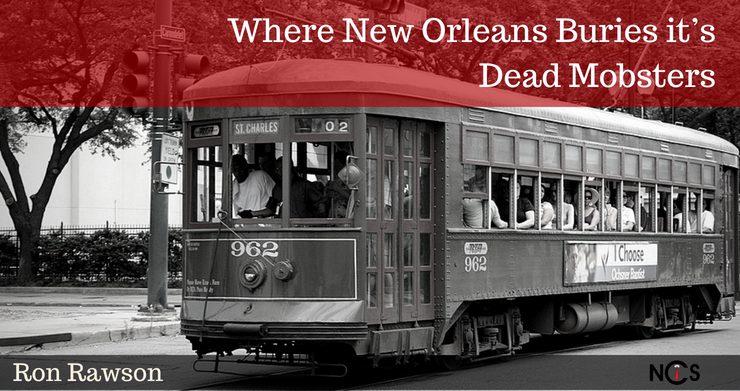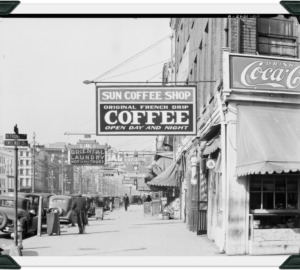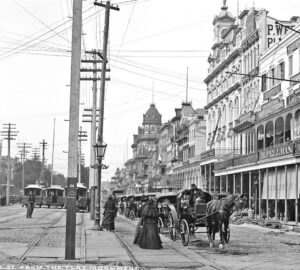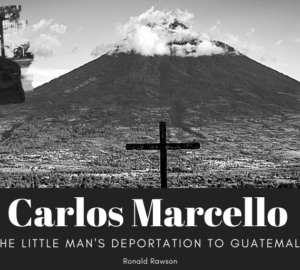Ever wonder where New Orleans, buries it’s dead mobsters?
Probably not unless you have a bit of ghoul in you. BUT, just in case the thought did pop into your head, the NCS and The Crescent Corner, have compiled a handy dandy (kinda) quick reference guide for you to consult. I do have a bit of the ghoulish in me, and have spent hours walking around in NOLA cemeteries looking for some friends of ours. So first off we don’t usually plant em’. The NOLA style is to set remains in what is virtually an oven to cook away in the Louisiana sun. Above ground tombs are the norm here, though you can find some in ground burials here and there. And in case you wonder why that is…. If you saw pictures of the recent flooding in Baton Rouge, you may have seen a few coffins floating in the water. NOLA is much more prone to flooding than Baton Rouge. Just would not do to have coffins floating around every few years or so. Metairie Cemetery, which is actually located on the edge of New Orleans, next to Metairie, is the resting place of the city’s excellent cadavers from all walks of life. Famous, infamous, national celebrities, local celebrities, military figures, business magnets, artists, musicians, actors and, at one point in time, Jefferson Davis, who was the President of the Confederacy. And of course our Mafiosi. Almost every top figure in NOLA, Mafia history rests within the fences of the Metairie Cemetery. So, onto the info!
Charles T Howard
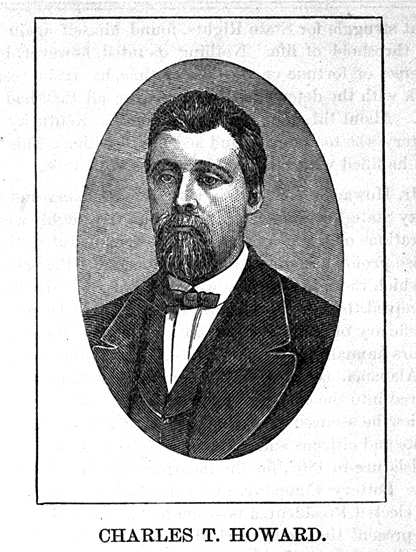
First a bit of history. The cemetery did not start it’s life out as such. It started out as the Metairie Race Course in 1838, and at the time it was considered the most prestigious horse track in the nation. A Baltimore businessman named Charles T Howard, was probably one of Louisiana’s biggest crooks as he was the founder of the Louisiana Lottery, that raked in millions of mid 1800’s dollars, (but that’s another story.) Prior to the Civil War, Howard sought entrance to the exclusive Metairie Jockey Club, which was affiliated with the track. The snobbish southern elite of NOLA were not too keen on this since he was a Yankee, and they refused him entry. Howard’s rich man mentality was deeply offended by their refusal, and he vowed to turn their track into a cemetery. When the Civil War and the quick Union occupation of New Orleans threw life and business into doubt, the track suffered financially. For the majority of the war NOLA was occupied by northern troops, and the track did not operate for most of this period. After the war ended, the owners of the track were in financial hardship. Howard seized the opportunity to make good on his vow from years prior and in 1872 he did exactly what he said he would do. Howard’s Cemetery, as it was locally called at one point, was immediately reserved for the well to do of New Orleans. Looking at a google view you can still see the outline of the track and tombs were arranged in a manner that followed the oval shape. At some point adjacent property was bought and that is called the New Section. The original property being known as the Old Section. Pretty ironic that NOLA’s mafiosi are all buried in what was once a horse racing track.
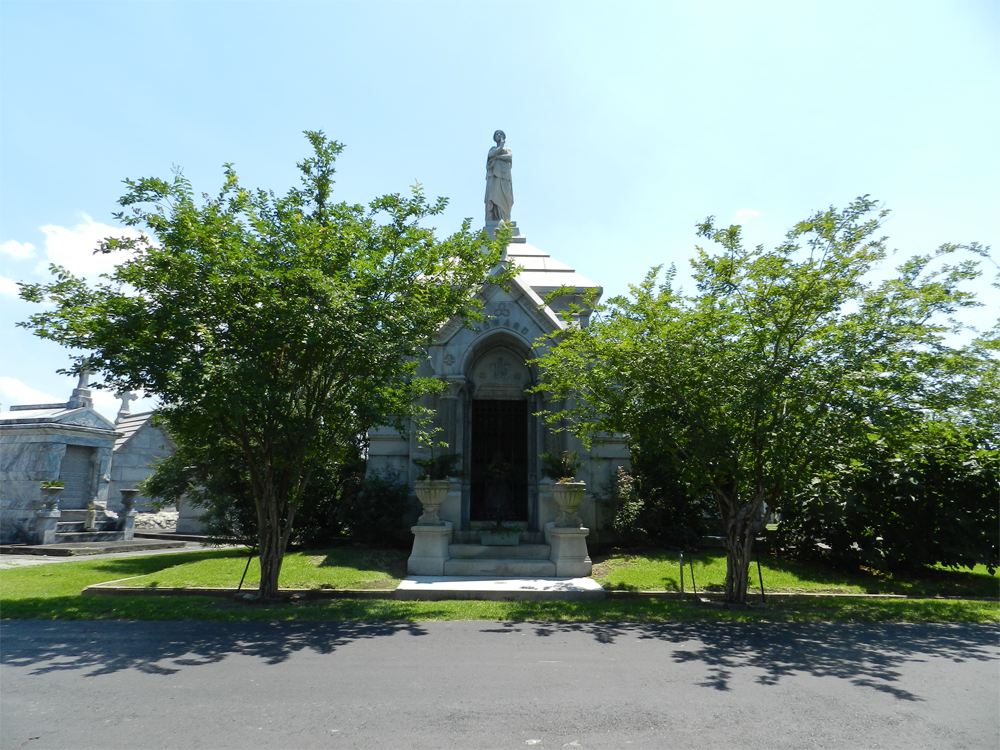 |
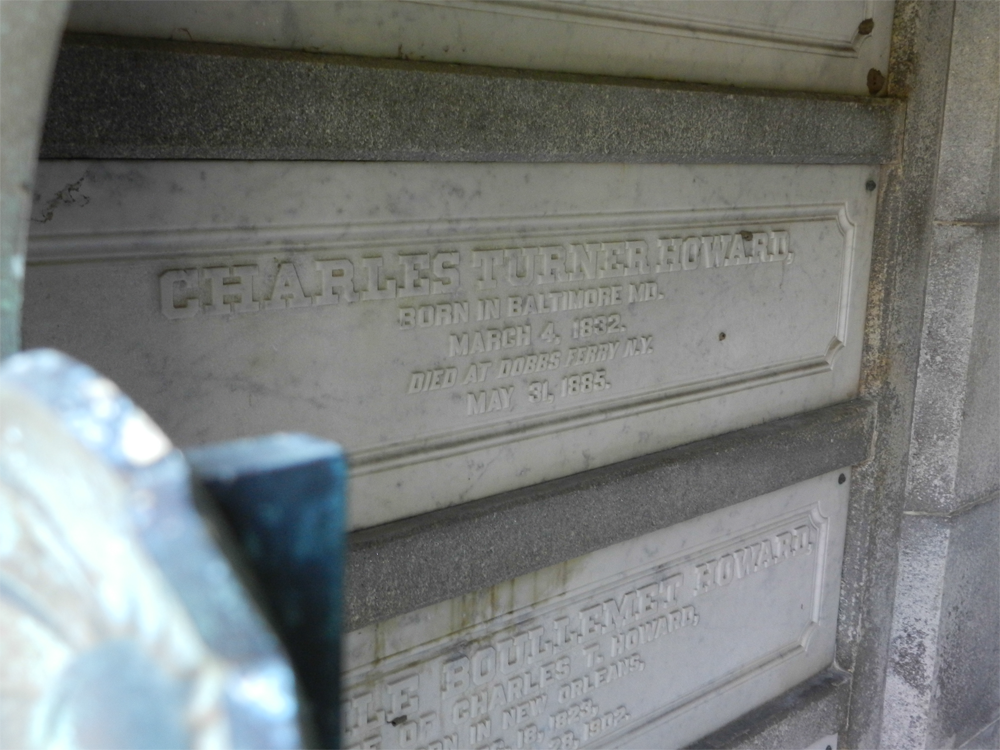 |
I have already covered enough on Howard but of course he’s interred in his own cemetery.
Rudolph O’Dwyer
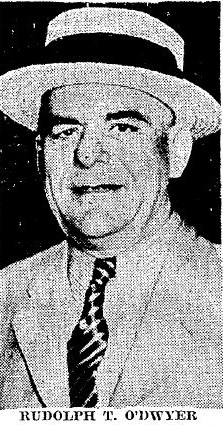
While not a mafioso per se, Rudy O’Dwyer was, along with his brother George,the man behind some of the illegal casinos in Jefferson until his death in 1940. The Old Southport Club, O’Dwyers, and Club Forest, to name some of the more popular ones. Truth told he probably had a hand in a lot more places around the area as well.
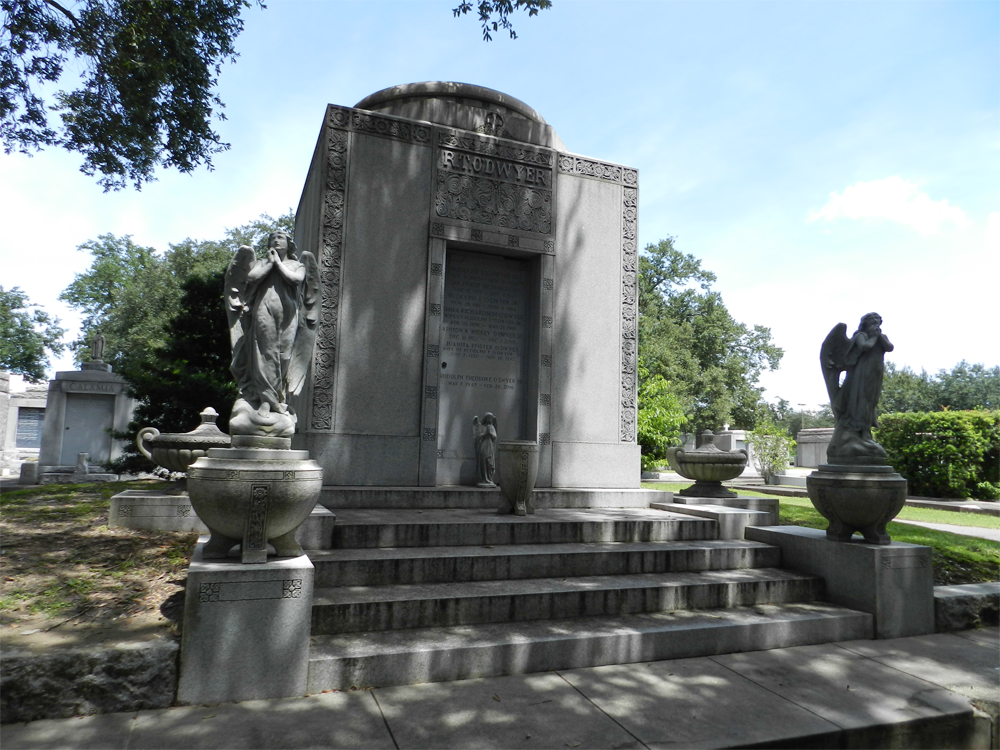 |
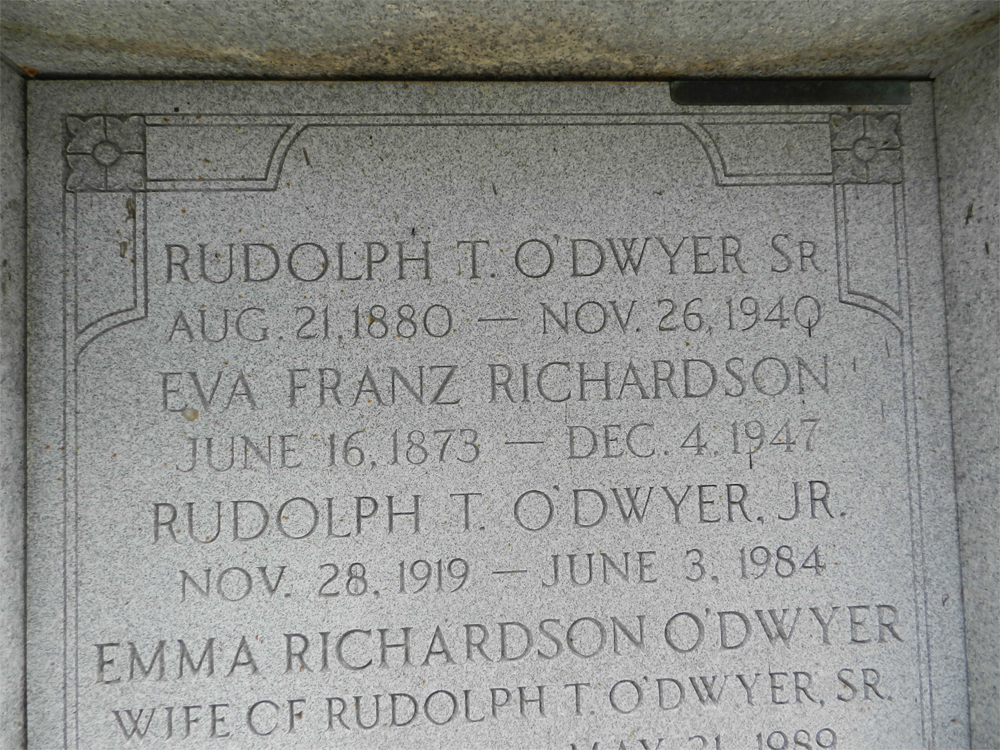 |
Carlos Marcello
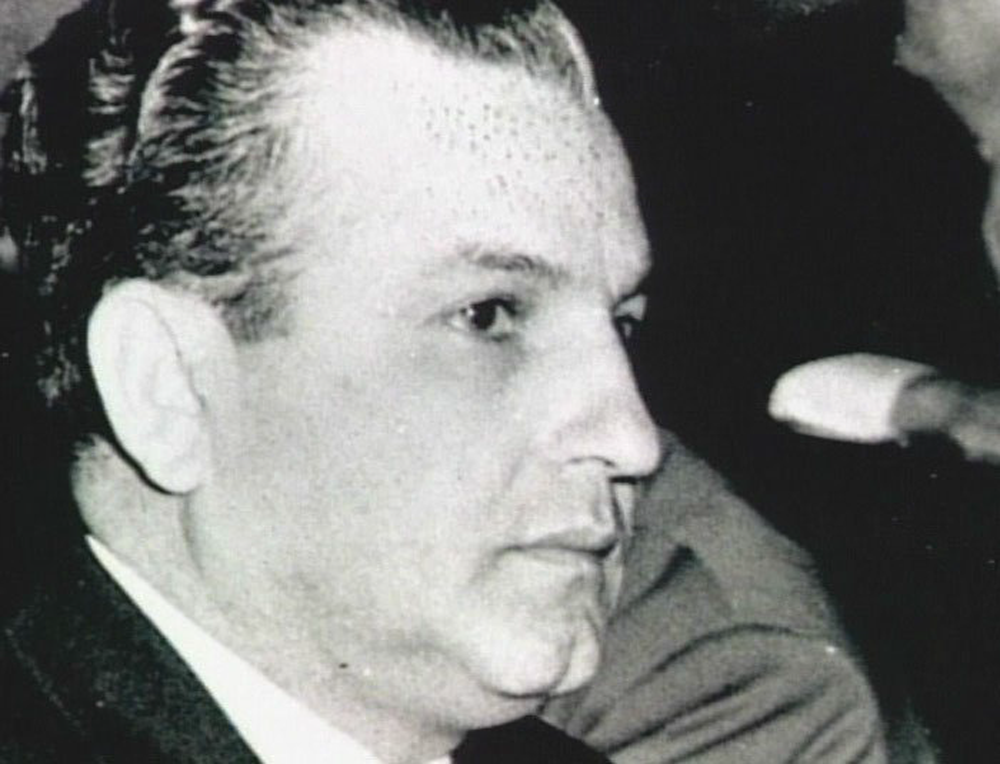
I think even the casually interested person in Mafia history knows a bit about Marcello, so just a bit here. It’s not quite clear when he actually took full control of the NOLA family. In 1947 he was voted in as the head of things, but it may have been as a temporary position at first. Silver Dollar Sam Corolla had been deported to Italy earlier that year but he had ambitions of making it back to resume control. He did make it back briefly in 1950, but was quickly deported again. So there is no doubt Marcello was in firm control by that time at least. He was originally interred in the family tomb in a Gretna cemetery on his death in 1993, but was moved to the tomb he now shares with his wife Jackie in 2003 in the New Section of Metairie Cemetery.
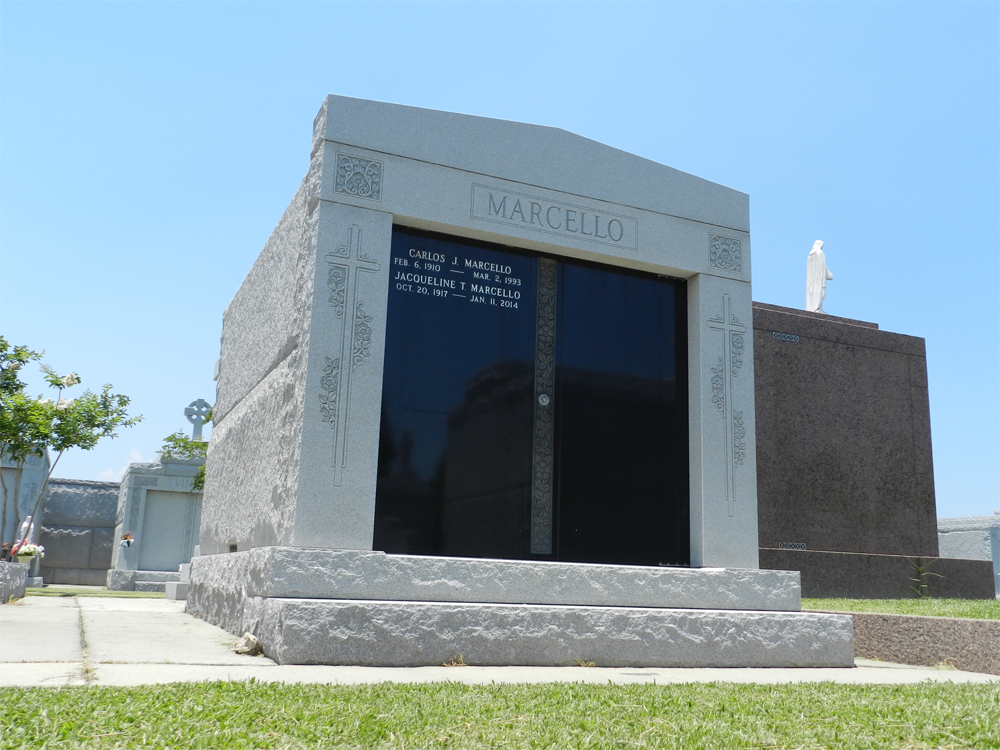 |
Charles (Salvatore) Matranga
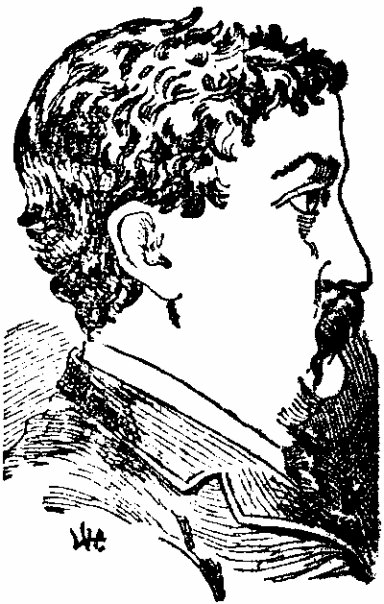
Considered to be the first actual modern Mafia leader of NOLA. Millionaire Charlie, was a survivor of the 1891 lynching at the Orleans Parish Prison. It’s argued whether or not he was just lucky or his survival was intentional by the very people that orchestrated the lynching where eleven others were killed. Given credit for organizing NOLA Mafia factions into one family and bringing it into a more modern and efficient crime organization after his survival in the OPP incident and a period of laying low. He retired from control of the family in 1922. He died in 1943. His obituary claimed he was a retired stevedore from the United Fruit Company.
Note: Charlie’s name is not found anywhere on the tomb. I speculate the reason for this was to confuse curiosity seekers back in the day. I did confirm with the company that runs the cemetery that he was indeed interred there.
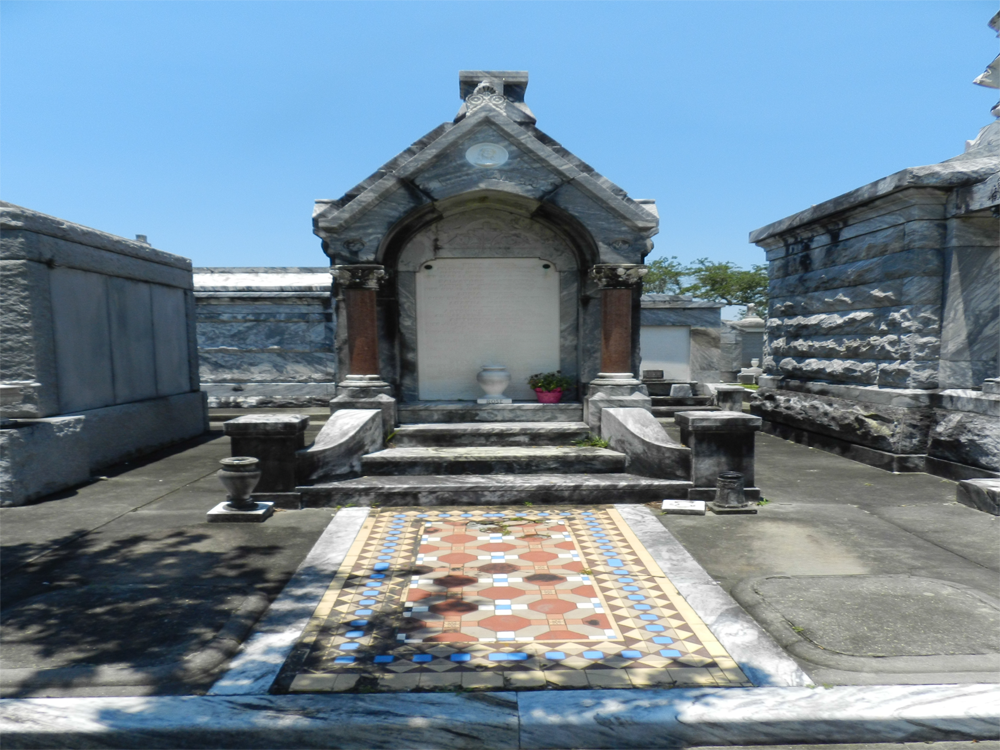 |
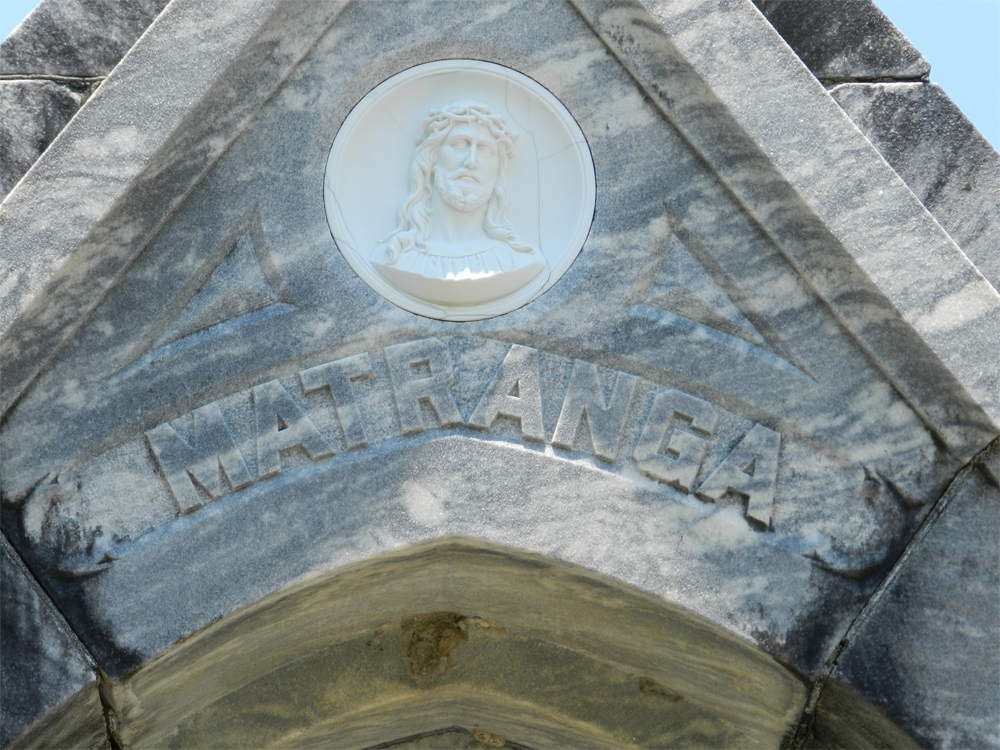 |
Corrado Giacona
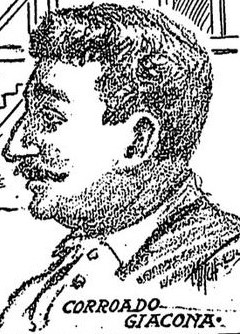
Giacona took over as boss of the family in 1922, upon Matranga’s retirement, and remained in that position until his death in 1944. It seems as if it was in a power sharing set up along with Sam Carolla, running the day to day operations. Not a whole lot of info on Giacona out there. (see our other story on some Giacona history I was able to dig up here in the CC).
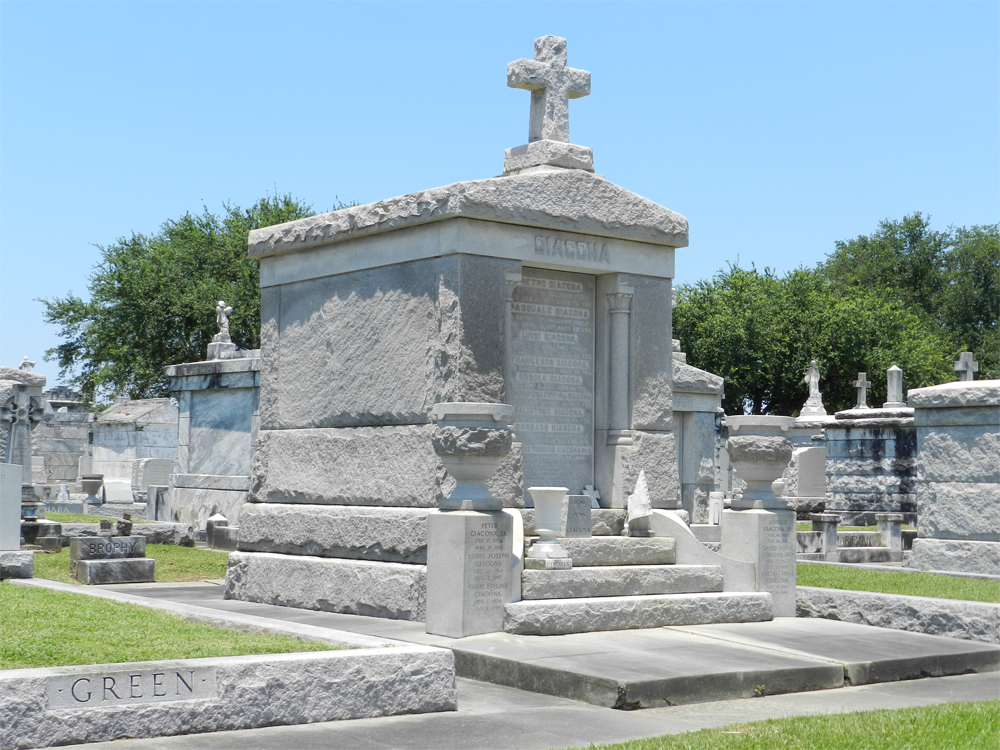 |
 |
Frank Todaro

Giacona’s Underboss. He took control upon Giacona’s death in 1944, but died about six months later due to throat cancer. Some speculation claims Silver Dollar Sam had a hand in his death with a little poison. Not a lot of info out there on Frank. His niece, (not his daughter as claimed in Mafia Kingfish,) Jaquelyn Todaro would marry Carlos Marcello.
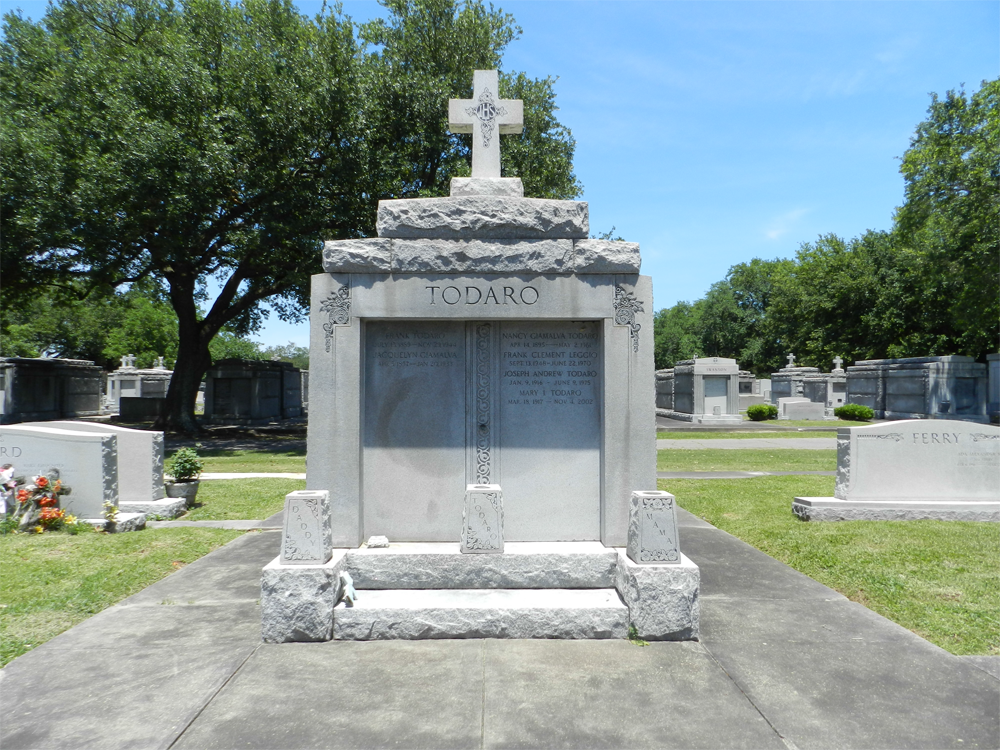 |
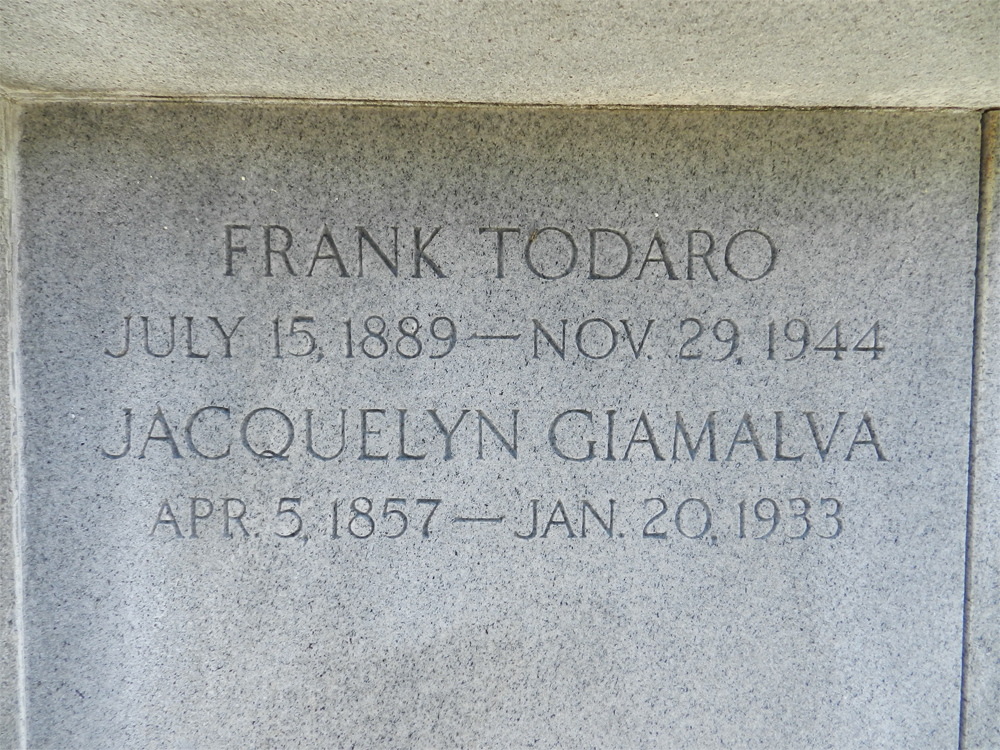 |
Frank Caracci
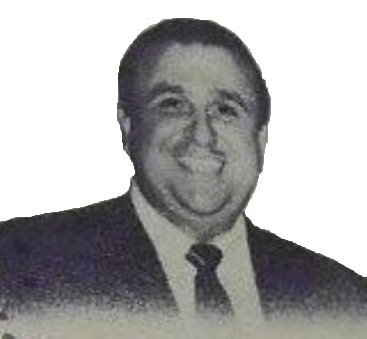
A gambler and strip club operator, he was also a capo in the NOLA family under Marcello. Owner of The 500 Club, and French Opera House, on Bourbon Street, as well as a popular late night bar in The Quarter called The Dungeon. Closely associated with NOLA mobster Nick Karno, who operated the Famous Door club, also on Bourbon St. Shortly before the assassination of JFK, Jack Ruby met with Caracci on the pretext of using one of his dancers in his Dallas Carousel Club. Jefferson Parish Sheriff, Harry Lee, once testified in court in favor of Carraci. Caracci died in 1996 of natural causes.
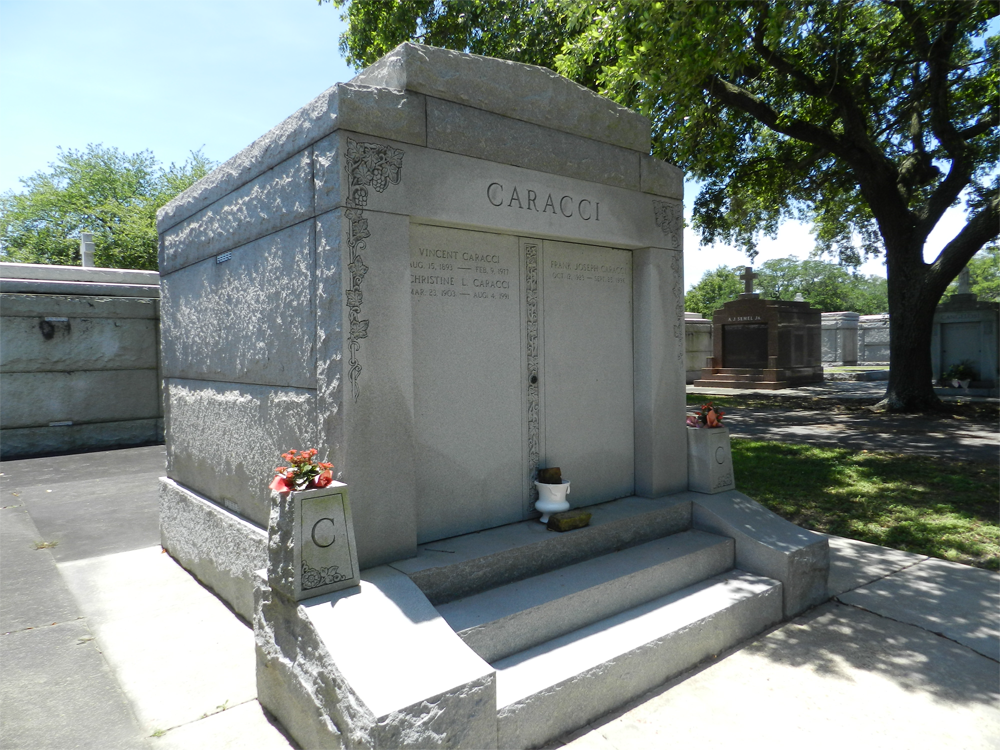 |
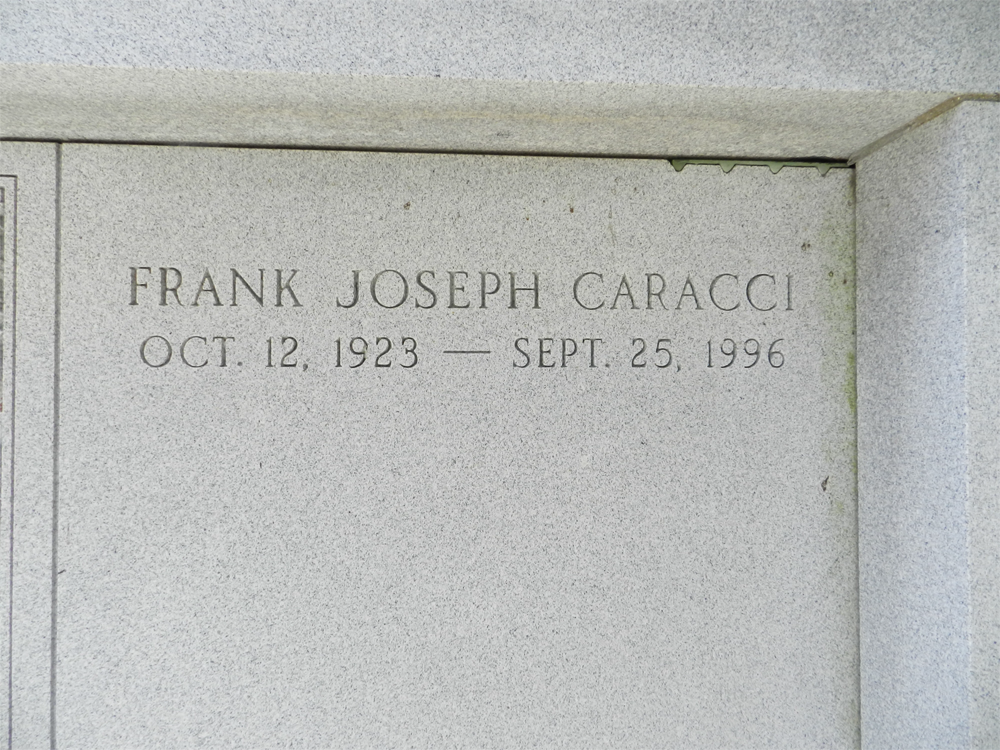 |
Harry Lee
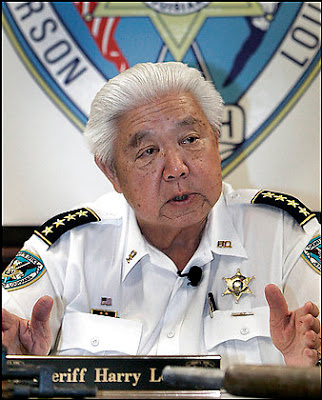
A popular Jefferson Parish Sheriff, he served in that capacity from 1980, until his death in 2007. When he died of Leukemia he was in his seventh term and weeks away from a possible eighth. Lee was well known for inflammatory remarks about black crime which drew attention nationwide and at least on one occasion he drew attention when, shortly before being elected to his first term and while in the capacity as a parish attorney, he spent the night at Carlos Marcello’s hunting camp in Grand Isle. The reason given by Lee involved talks over a settlement in a lawsuit that a company, partially owned by Marcello, was bringing against the parish for illegal dumping of sewage waste. As stated above, he also testified for Frank Caracci in one instance.
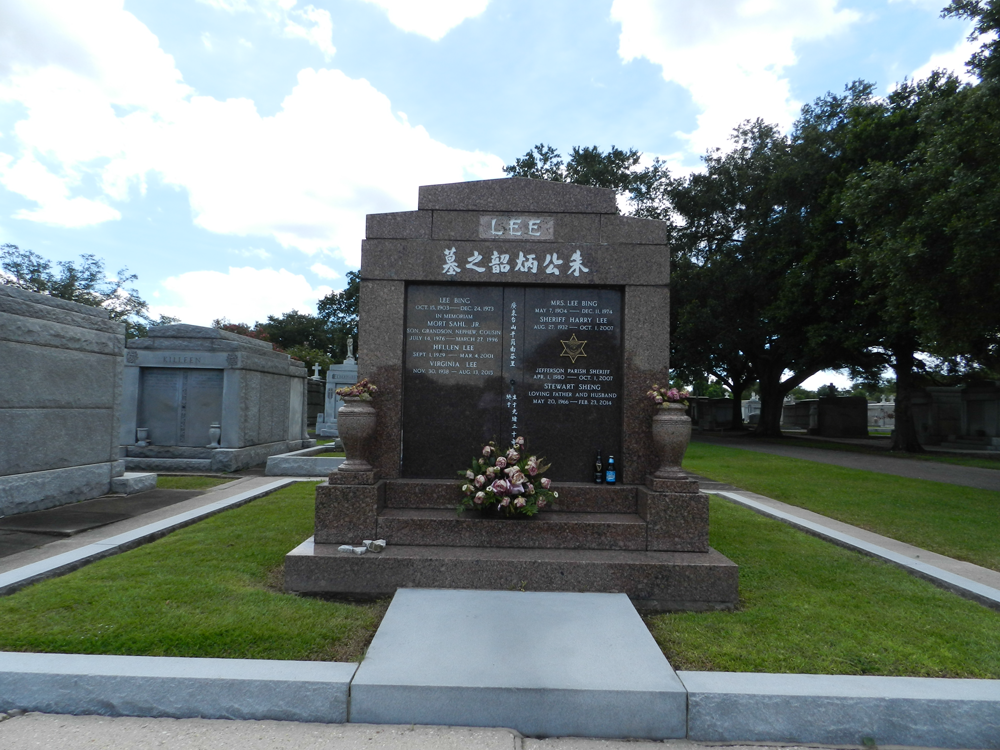 |
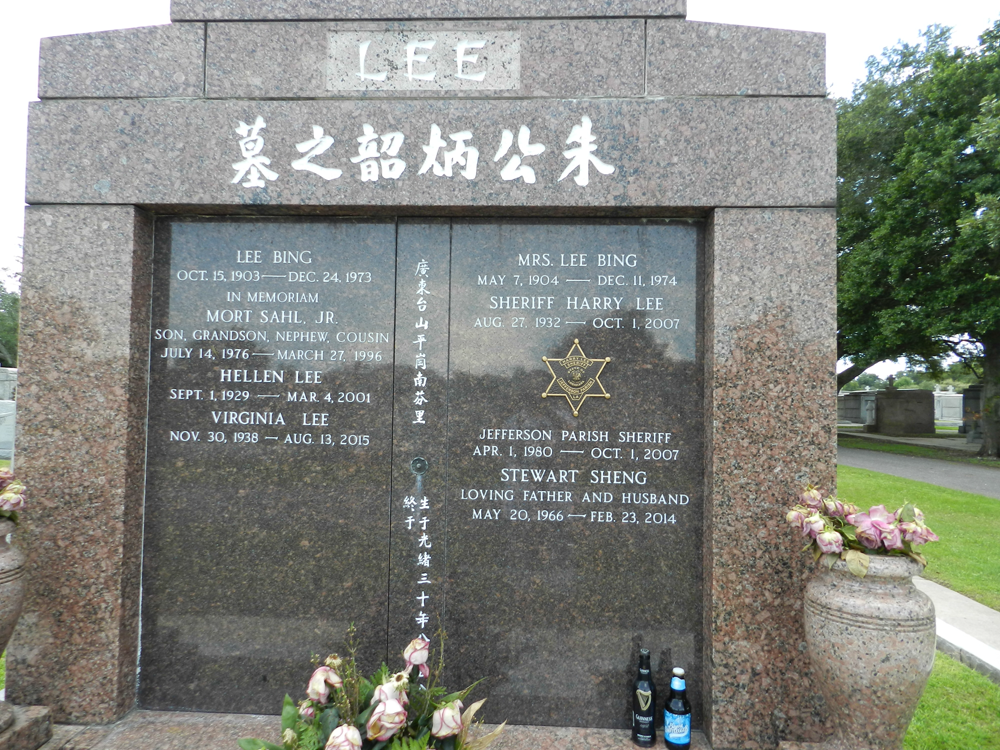 |
Sam Saia

Saia, ran gambling operations from a popular French Quarter restaurant called Felix’s Oyster Bar. One of Saia’s number runners was a guy named Charles “Dutz” Murret. Murret’s nephew helped him out and worked for him in the summer of 1963, so essentially worked for Saia, and by extension, Marcello. Murett’s nephew was Lee Harvey Oswald.
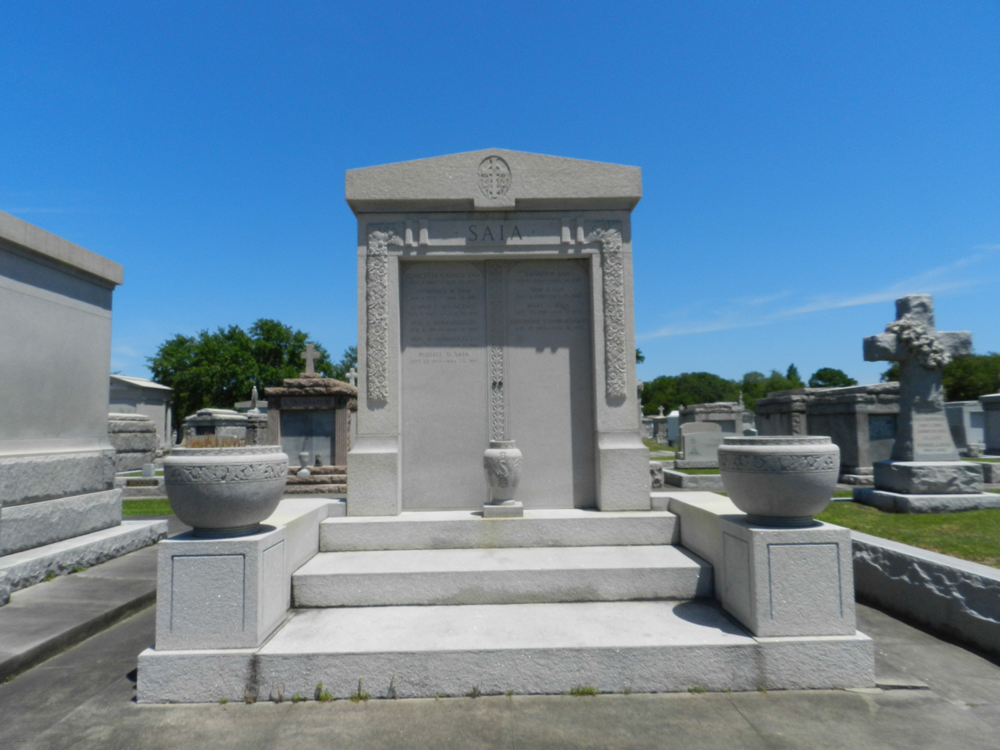 |
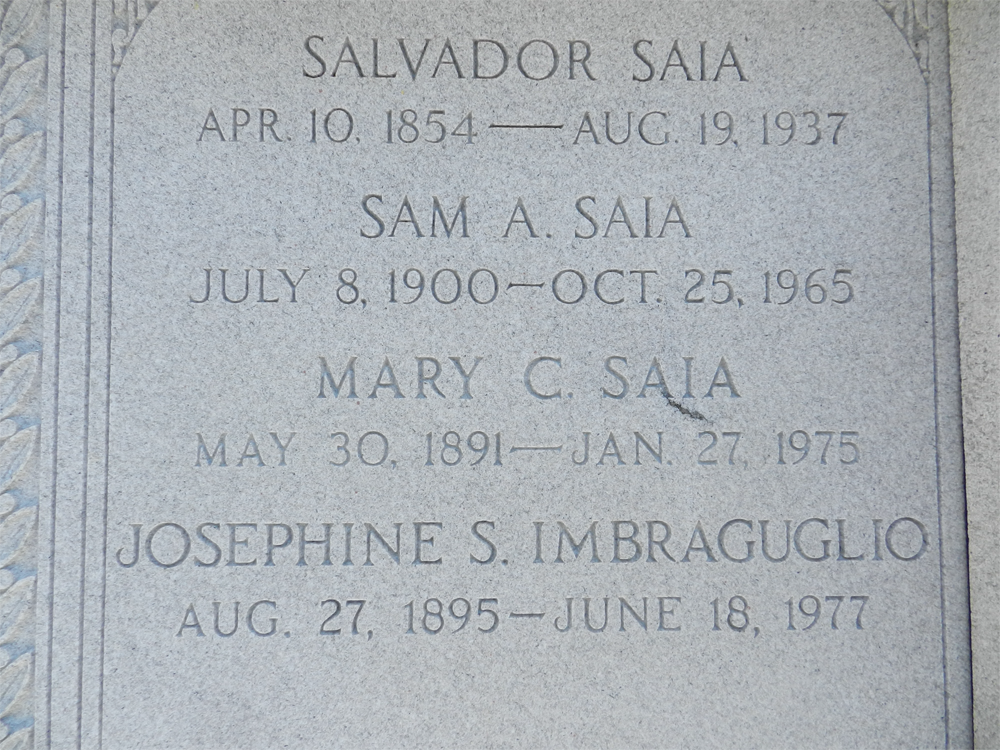 |
Jim Garrison

We all know who Garrison was and about his investigation into the JFK assassination. Oliver Stone’s movie made him well known to even the casual JFK conspiracy theorist. Anyone familiar with the movie may remember that there was very little mention of any Mafia connection to the assassination. With good reason! He did little to look into any aspect of that theory. In fact it’s said that Garrison was on good, if not friendly, terms with Marcello and enjoyed the hospitality of some NOLA connected guys while in Las Vegas. The Ferry, Oswald and Ruby connections to NOLA and Marcello were in plain sight but Garrison failed to see them somehow.
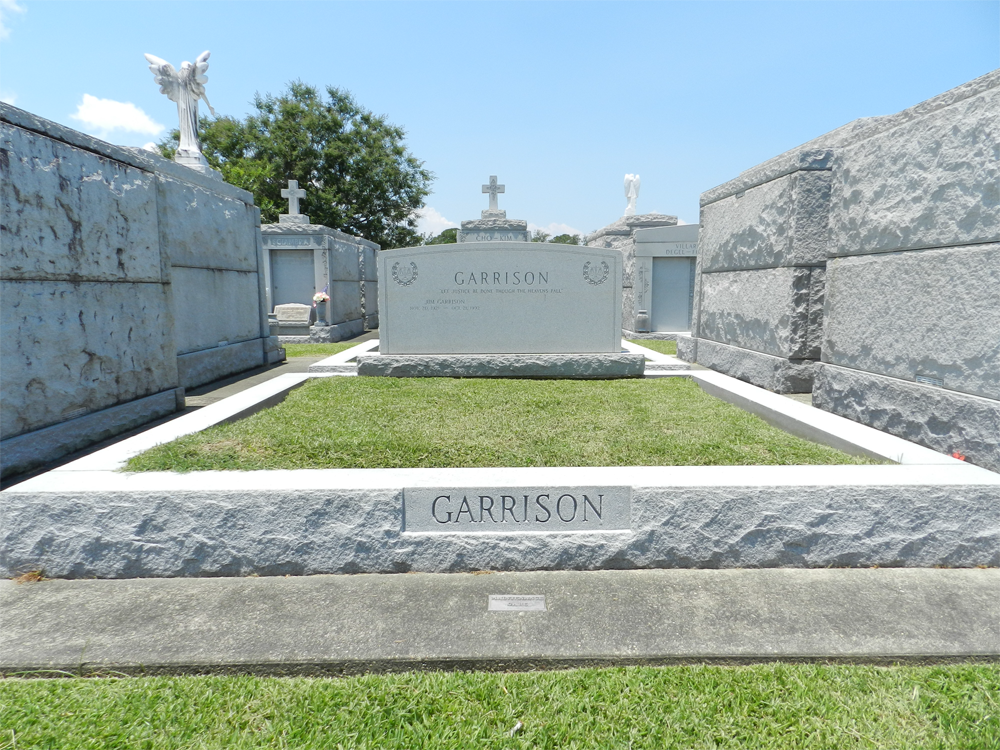 |
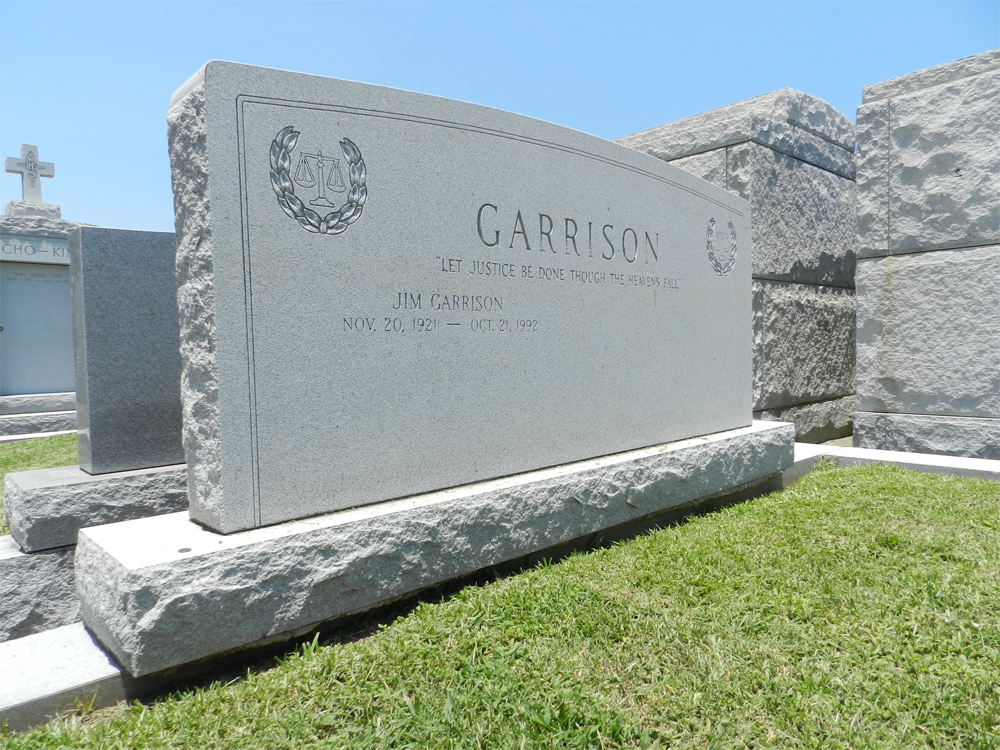 |
David Hennessy
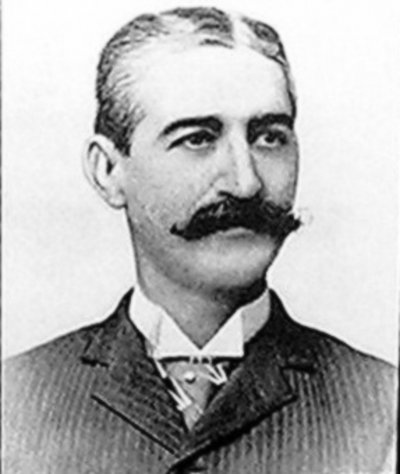
A new Orleans sheriff, who was assassinated on Girod Street, in a gun battle near his house on October 15, 1890. Hennessy first made a name for himself along with his cousin Micheal, almost a decade earlier by catching the then infamous Sicilian bandit and probable head of the NOLA Mafia Palermo faction, Joe Esposito, in Jackson Square at the edge of the French Quarter. His murder prompted the rounding up of hundreds of Italians and ultimately nineteen being indicted for his murder. After the first nine defendants were found not guilty and verdicts of insufficient evidence against three of those on March 13, 1891, the largest lynching in American history took place the following day at the parish prison. Charles Matranga was one of those defendants, but survived along with his right hand man, Bastiano Incardona, and fourteen year old Gasperi Marchesi. The other five killed were in the second group of defendants still awaiting trial. Hennessy was known as an outstanding law man, but had many enemies on both sides of the law. And a few years prior to the events of 1890/91, he was put on trial for murder himself, for the shooting of another NOLA lawman named Thomas Devereaux. He and his cousin Micheal Hennessy were found not guilty by reason of self defense.
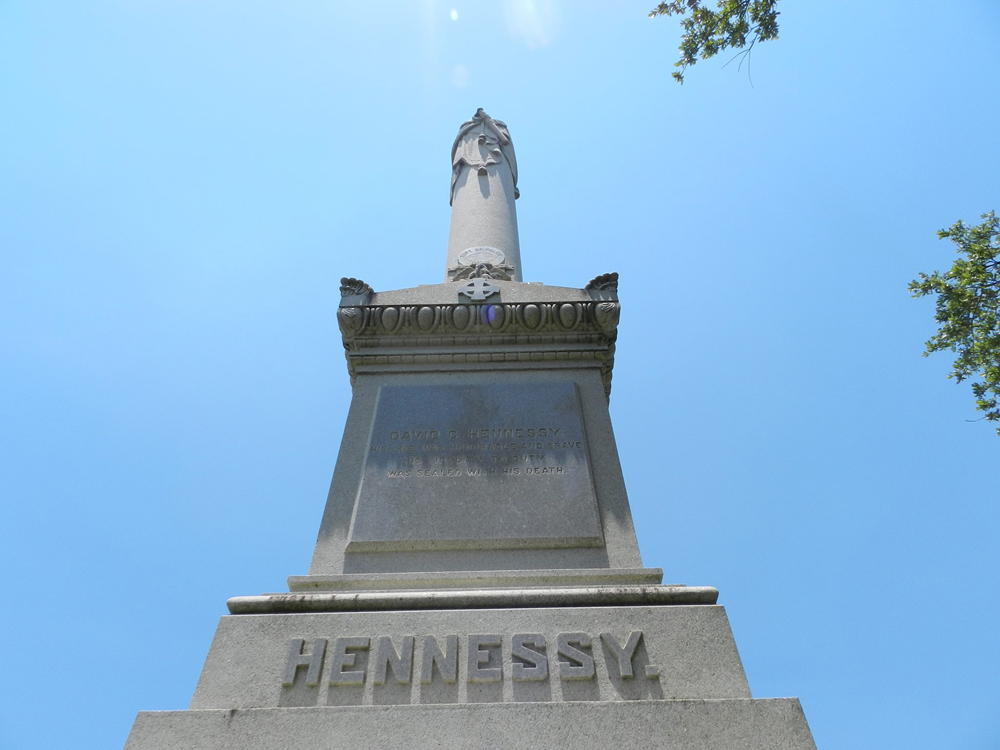 |
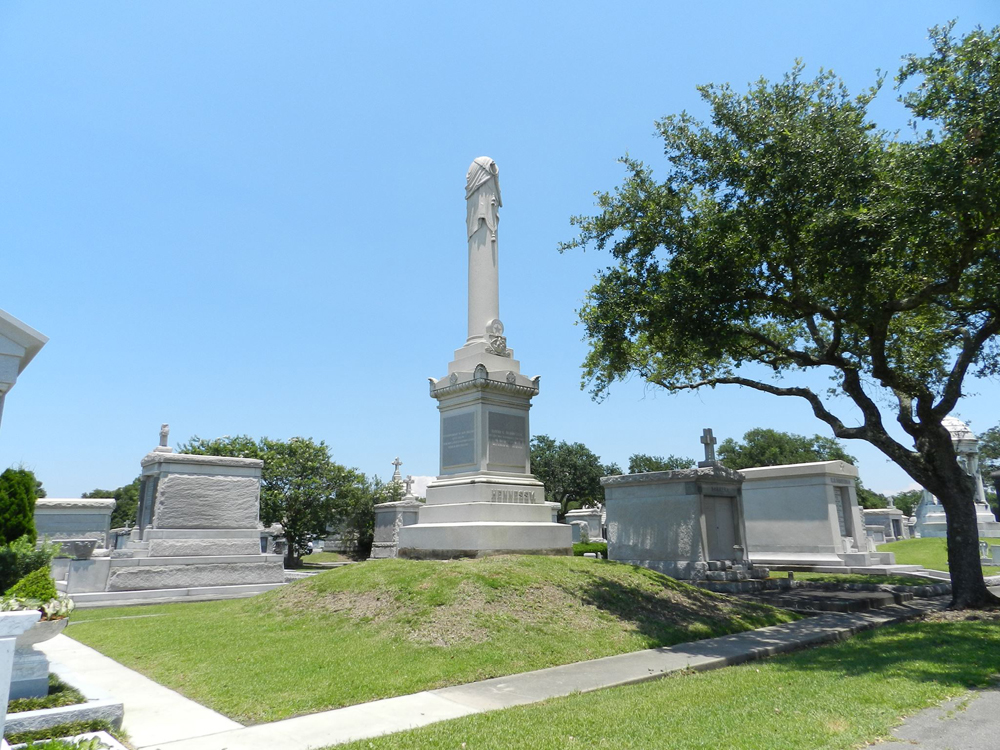 |
James Houston
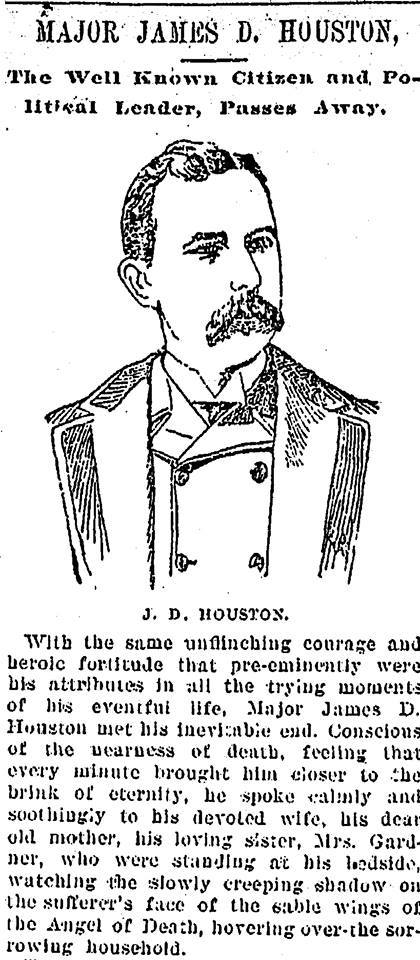
A new Orleans businessman, genuine tough guy, and behind the scenes politician, he played a roll in events surrounding the 1890/91, lynching. It’s unclear just how much he profited from the
death of wealthy fruit importer and shipping businessman, Joseph Macheca, who was one of the victims of the 1891, lynching. Many argue that Houston, was a driving force behind the lynching and even possibly Hennessy’s assassination itself. If he did profit from those deaths it was not for very long, as he died himself a couple of years later.
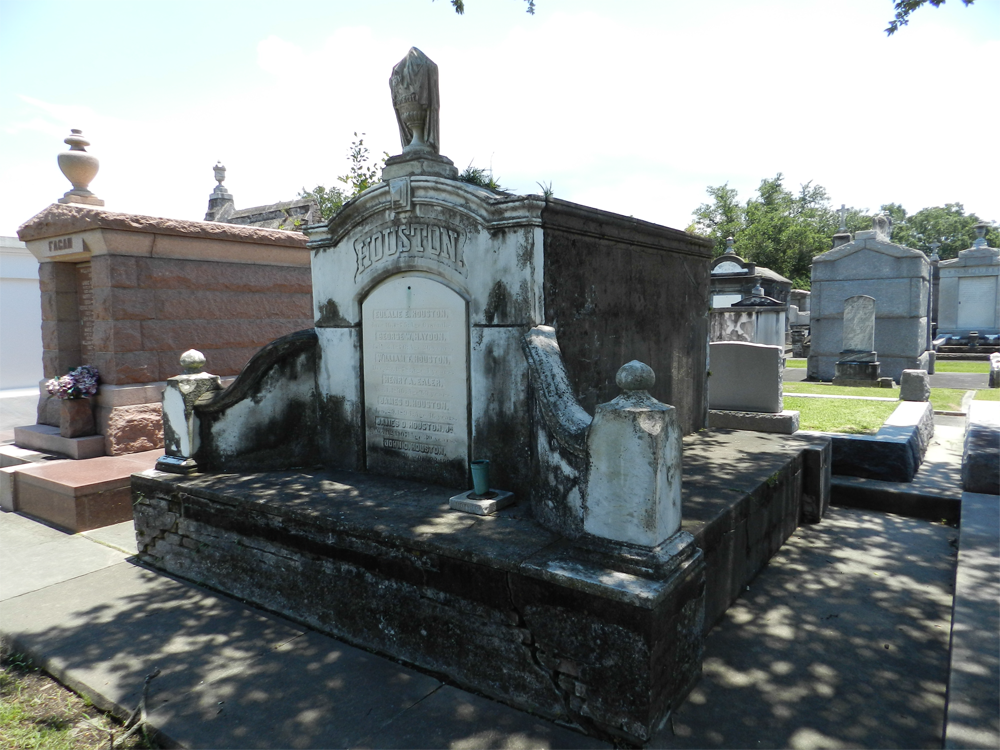 |
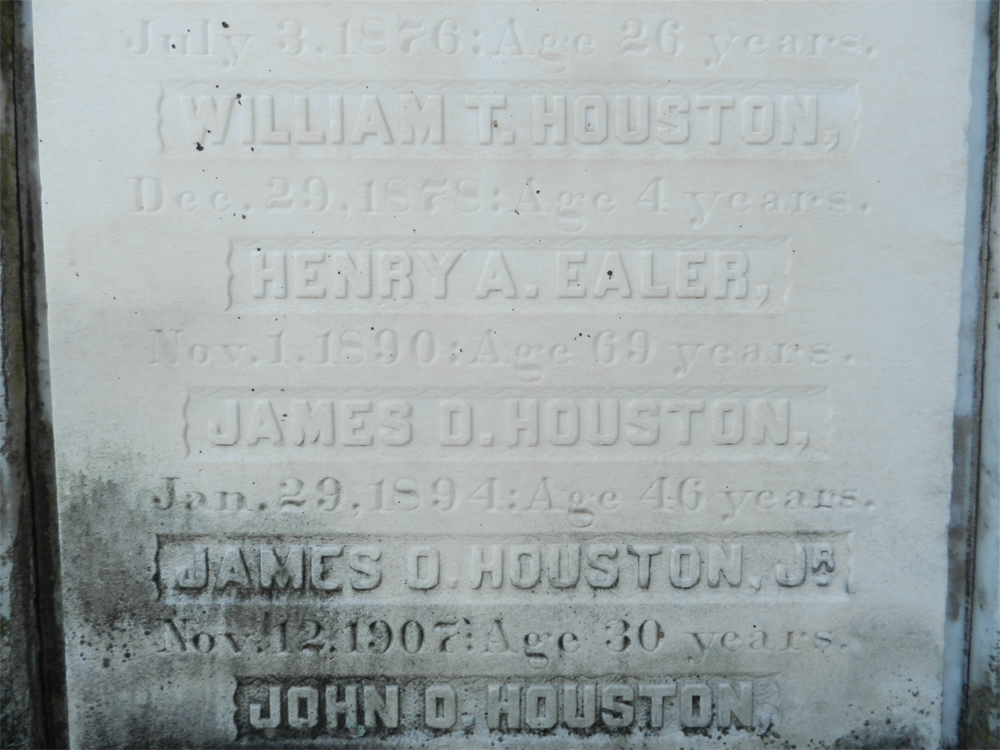 |
Joseph Shakespeare
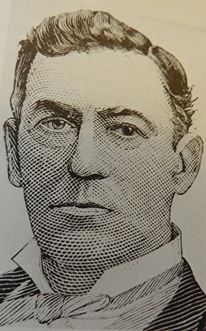
Two time Mayor of New Orleans. He was in his second term as Mayor when the 1890/91 events surrounding Hennessy and the Orleans Parish Prison happened. Shakespeare appointed Hennessy as sheriff when he was elected his second time into office. Most probable he was in collusion with the forces behind the 1891 lynching or, at the very least, did nothing to stand in the way of events.
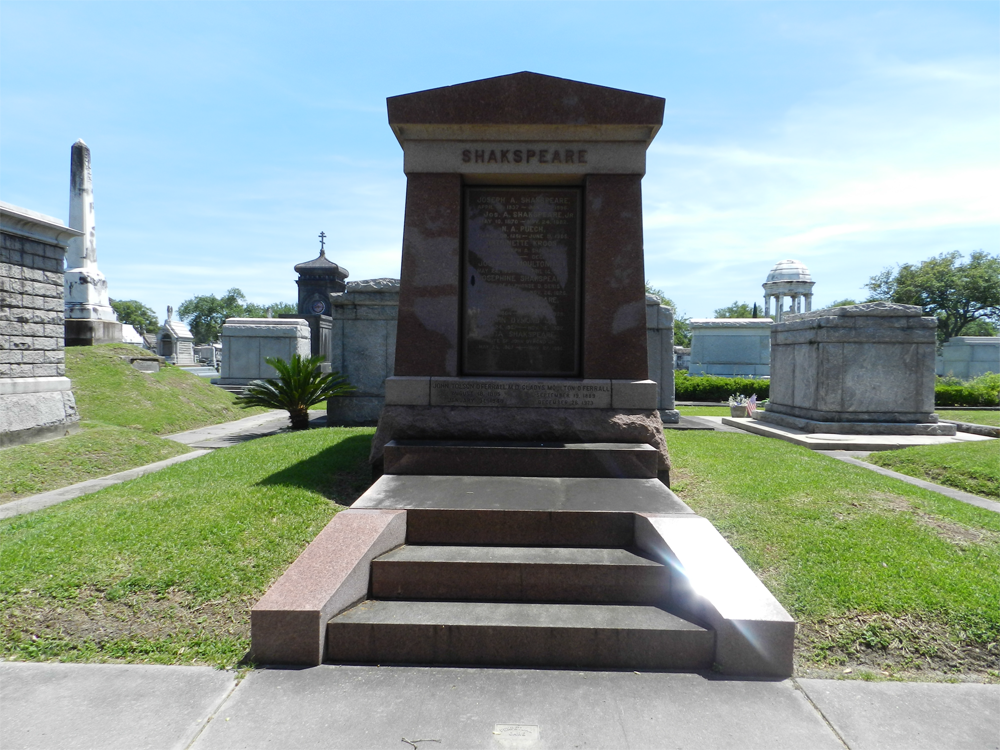 |
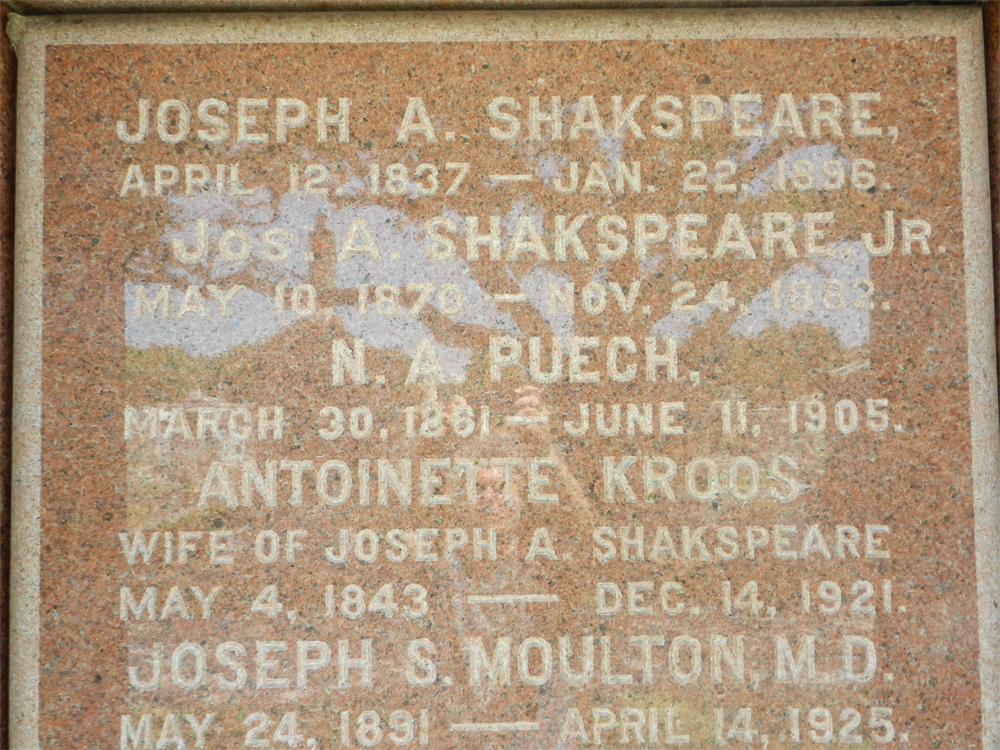 |
Josie Arlington

Born Mary Deubler in New Orleans, she began her career as a prostitute in 1881, and eventually became the richest Madam of her day, and ran the most luxurious brothel in Storyville, which was named The Arlington after her. In those days the more upscale brothels were known as $5 Clubs and hers was the top of the $5 Clubs. Life was good for Josie given her profession, but a fire at the Arlington in 1905, forced her to ponder her future. She grew increasingly despondent about it and prepared for the inevitable. The Arlington, which had been repaired was sold in 1909. Josie had bought a tomb in the Metairie Cemetery (I’m sure some of the NOLA elite WERE NOT happy about that!) that is said to have been modeled after one she saw in Munich. Josie died in 1914, but that did not put an end to events surrounding her. Tales of a fiery tomb and the bronze statue coming to life and walking the grounds soon made the tomb a tourist attraction. The name on the tomb is now Morales, as it was sold. Speculation for the reason on this is that the tourists were becoming a problem and Josie’s remains were moved to an undisclosed location, but there is also the possibility that Josie’s niece, who she left everything to, eventually ran out of money and sold the tomb off for the cash.
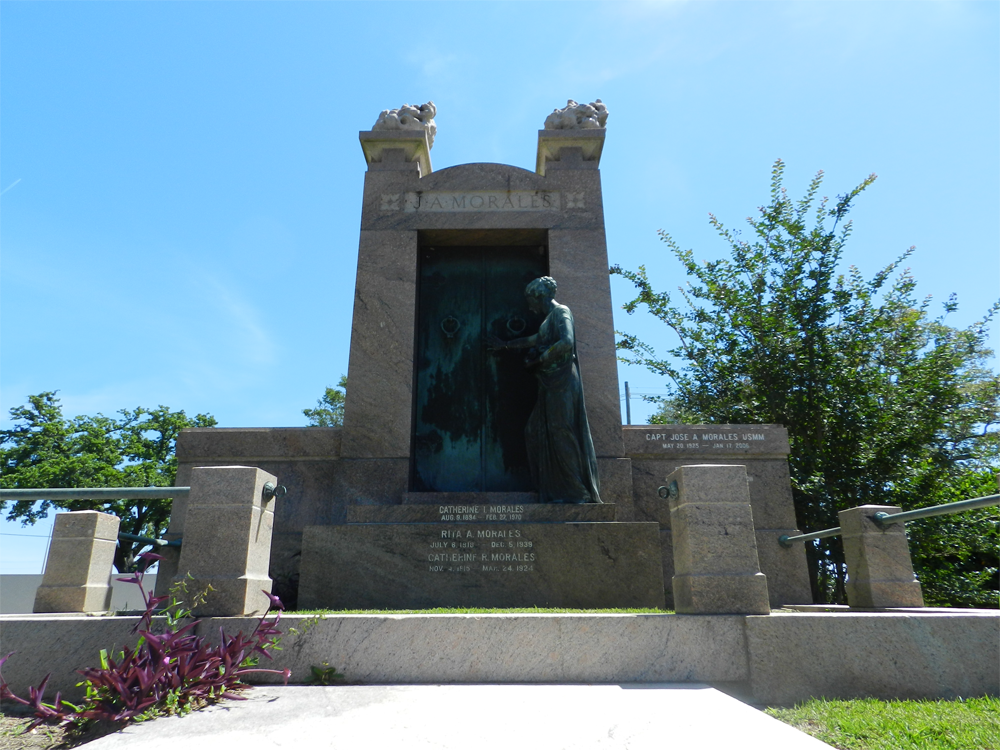 |
Walter Lamana
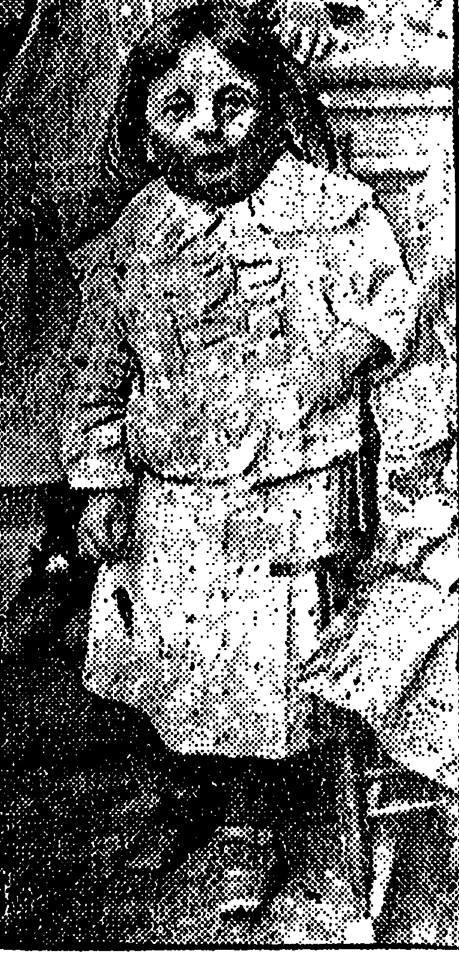
Walter was a little eight year old boy who was snatched from in front of his house for ransom in 1907, by Black Hand members. His father, Peter Lamana, was a well to do Undertaker, and they
planned a $6,000.00 ransom. His body was taken into the swamps in the an area known as St. Rose, when those holding him became nervous at the prospect of capture and killed the boy by strangulation. It was reported in newspapers at the time that his neck was broken during the strangulation and his head became separated from his body when decomposition set in. Soon after, nine people were arrested for the crime including two women. Two of the people were sister and brother. All were convicted at trial to life but the Gebbia’s, the brother and sister, were sentenced to death. Nicolina Gebbia’s sentence was commuted to life due to her gender but Leonardo Gebbia swung from a noose. His last request was to not let Peter Lamana see his execution and indeed the gallows sat behind a wall. The gallows however was tall enough for Peter Lamana and the rest of his family see the murderer of Walter plummet until the rope stopped him.
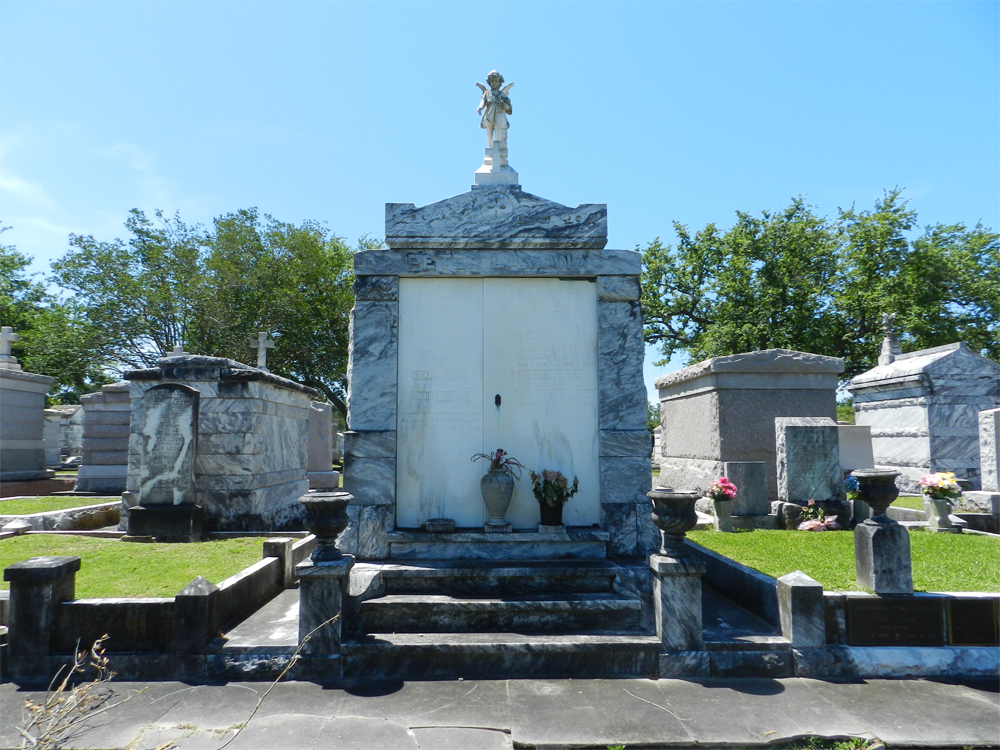 |
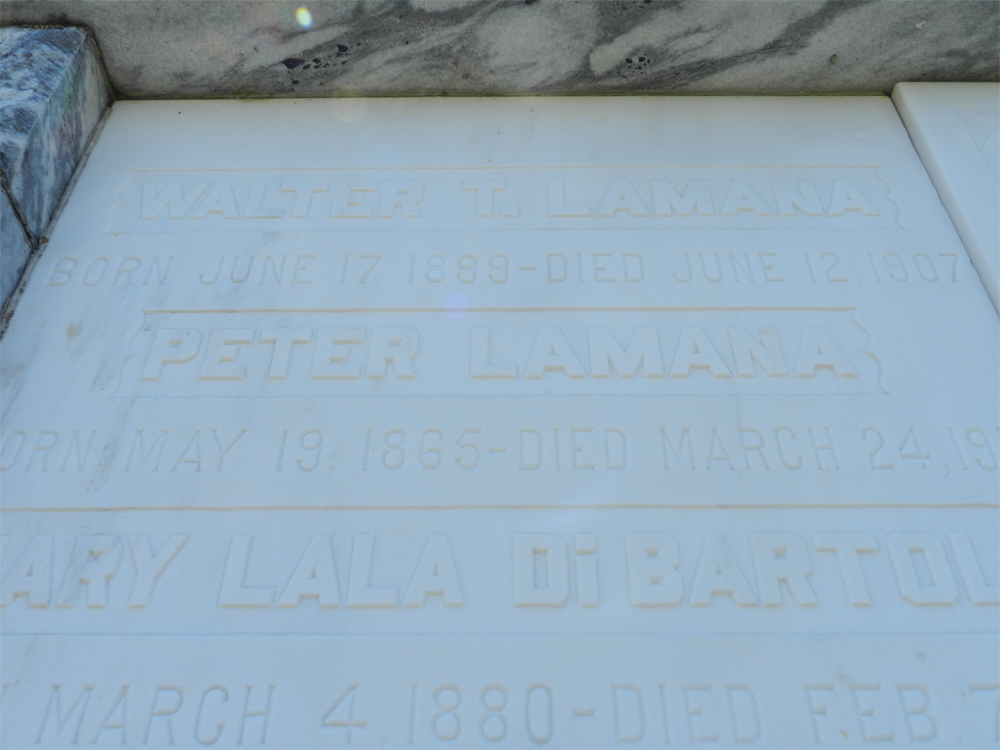 |
Diamond Jim Moran
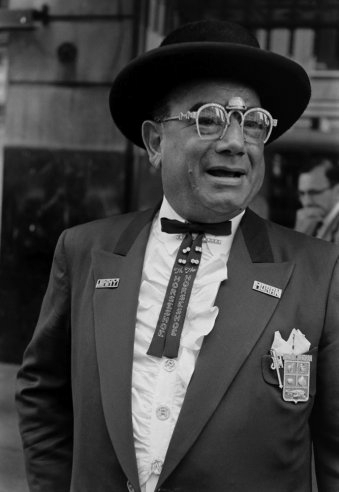
Real name, James Brocatto. Diamond Jim, was a friend to politicians, actors, musicians and mobsters. He was in the state capitol building when Huey Long was assassinated. I’ve read speculation that Moran was a full fledged made member, but I think he was just mobbed up through his connections. A restaurateur, he ran some of the finest establishments in town. La Louisiane, and Food or Kings, being two. Known for his habit of over dressing and “big” personality.
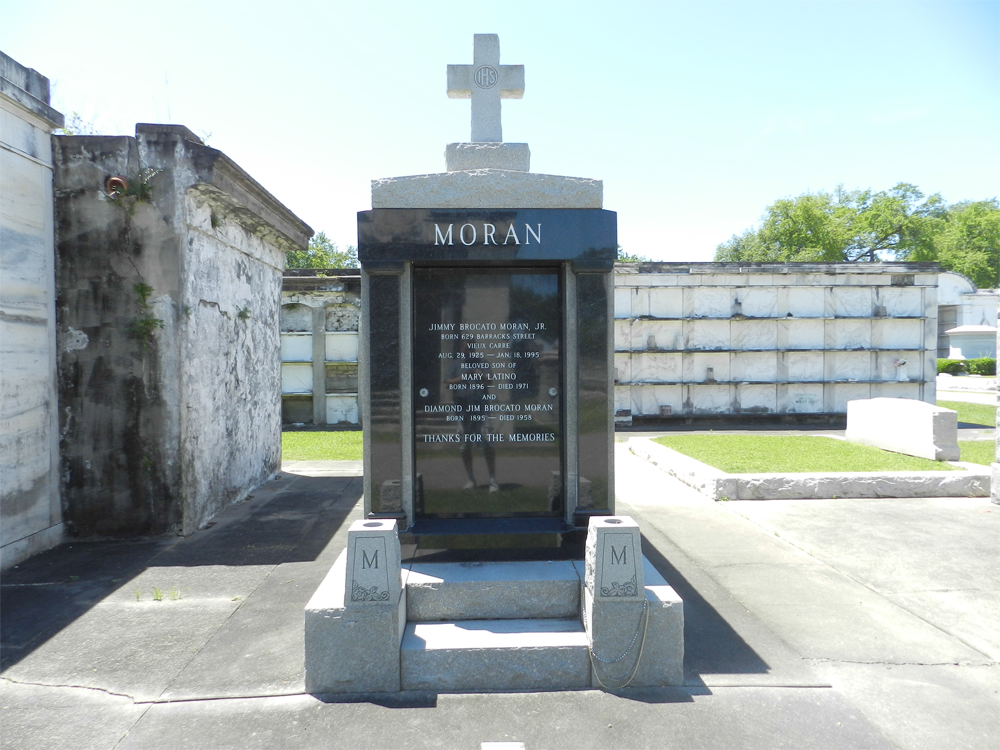 |
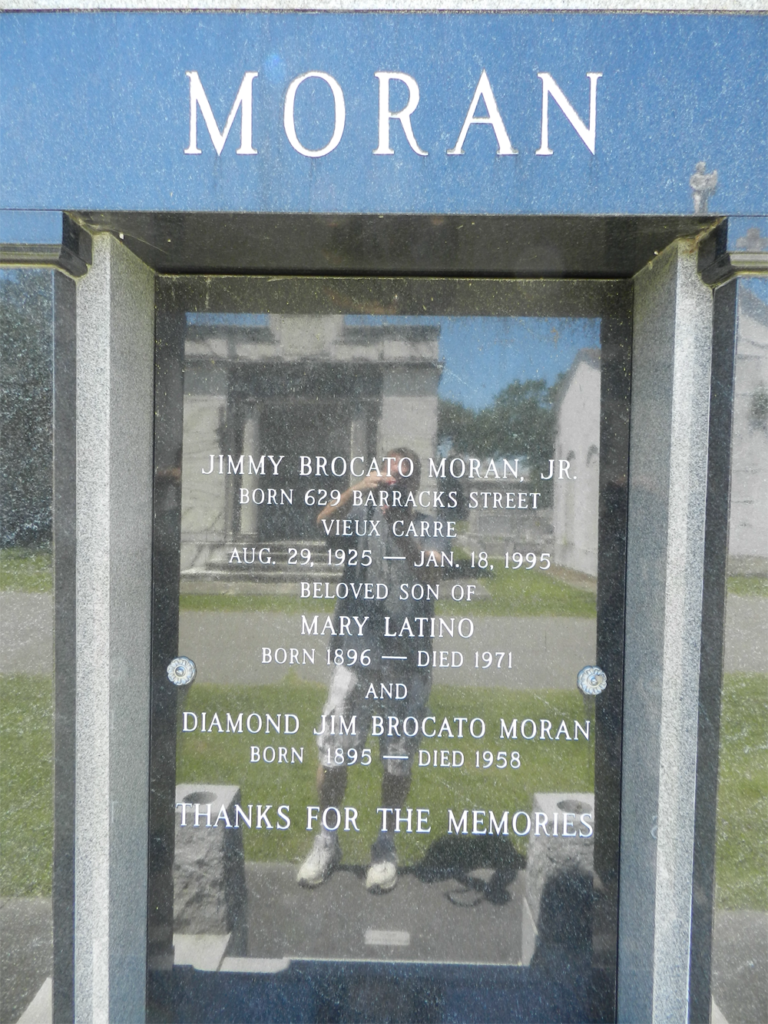 |
Louis Prima

While not mobbed up, he did play the clubs on Bourbon Street in his up n’ coming days so I’m sure he rubbed shoulders, and was on a first name basis with some NOLA mobsters. It’s more likely that his brother, Leon, had more contact with those types as he had a standing gig at Caracci’s, 500 Club, and was the house band for a period. In fact the place was billed at one point as Prima’s, 500 Club. Louis left NOLA behind when he started to gain fame. Some Prima hits include That’s Life, Just a Gigilo, Coolin, Jump Jive an’ Wail and Buena Sera.
Note: One of the victims from the 1891 lynching, Frank Romero, used to be interred in an Italian Society tomb (groups or families would pool their money to buy and build these to insure they had a place to go when the time came) of the Tiro al Bersaglio Society, which was an Italian gun club, in Metairie Cemetery. Sometime prior to 1978, a storm damaged the tomb beyond repair and it was dismantled and the remains scattered to different plots or cemeteries. The Moran, and Prima tombs sit side by side and occupy the spot that the Tiro al Bersaglio tomb used to sit on. The Romero remains are yet to be found.
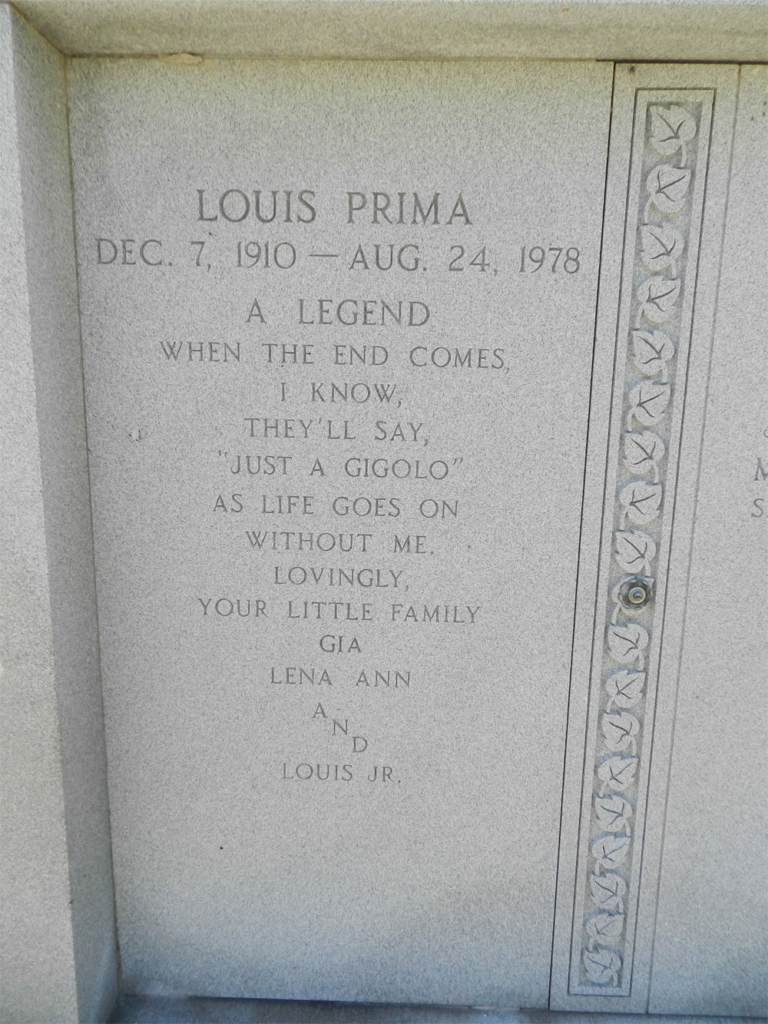 |
 |
William Stirling Parkerson

William Stirling Parkerson, was the driving force behind the 1891 lynching at the Orleans Parish Prison. The head of The Committee of Fifty, drafter and signee of the Mass Meeting notice at the Henry Clay statue on March 14th, leader and organizer of the break in to the prison and execution squads. After the lynching, Parkerson had nationwide celebrity but also a lot of “bad luck”. He had many threats against him. A few months after the lynching his wife died in October of 1891.His house was set on fire a few times and then just after his wife died it burned to the round, just before Christmas that year. His daughter died at the age of 29 many years later in 1914, apparently of an accidental gas leak in his house. Depressed and distraught over his daughters death he apparently tried to commit suicide by slicing his own throat open. He was found alive, but the wound became infected and he died about a week later on Valentine’s Day, 1915. Karma or a long held vendetta finally satisfied I don’t know, but sure seems an unusual way to kill yourself.
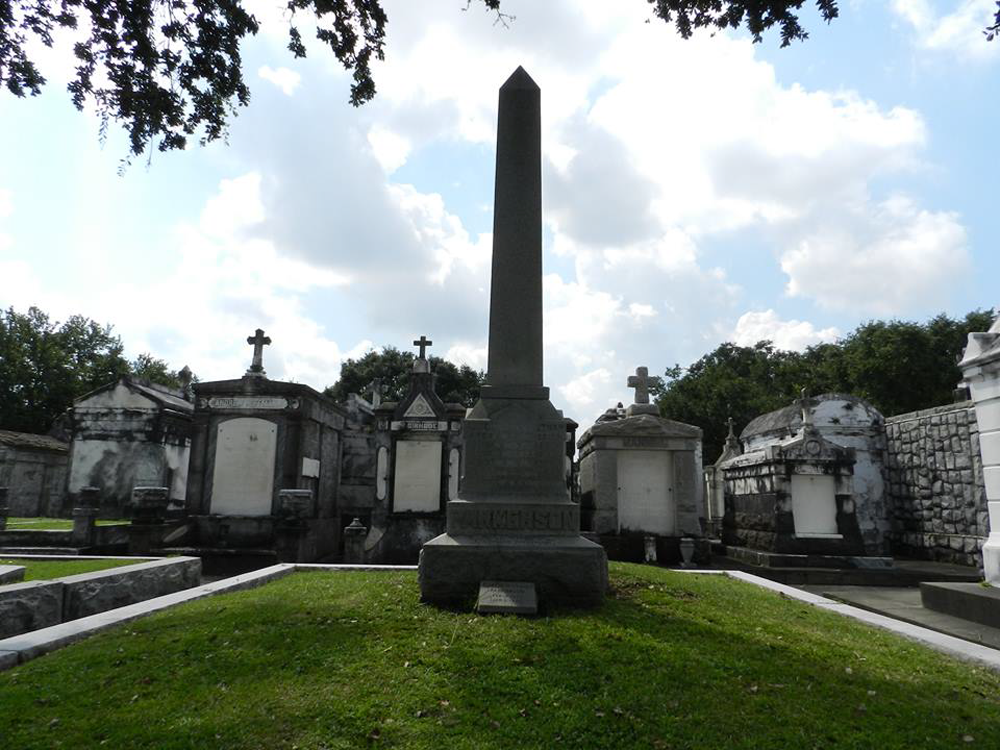 |
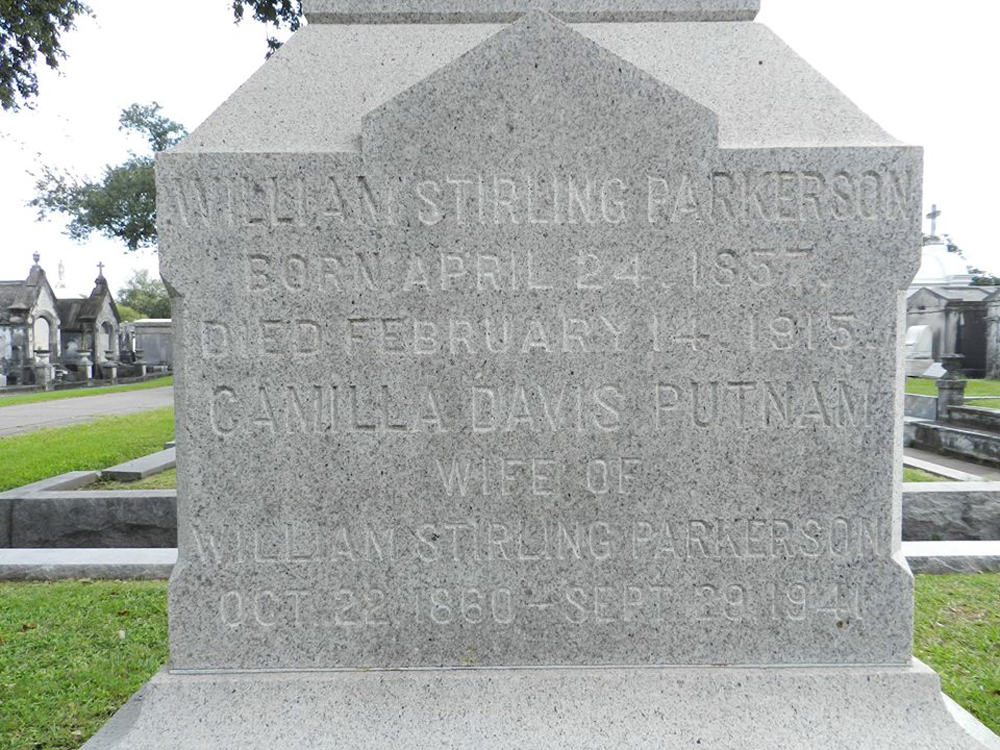 |
John Macheca

John Macheca was by no means mobbed up from what I can tell. He’s significant only as a side character in the Hennessey/Italian lynching story. He was the half brother of Joseph P. Macheca, who was killed in the lynching. Apparently it was a secret that they were half brothers and all got along fine until their father died and left everything to his sons John, and Micheal. They were all fruit importers and shippers. Years of court battles ensued over the business that Joseph had helped to build and run. So, there it is. While these may not be all the figures of the NOLA underworld to rest here, it is the cream of the crop. I usually get surprised and find something new when I wander in between the tombs there. Sometimes totally by chance, as happened recently with the Rudy O’Dwyer, and Harry Lee tombs. I have yet to find the resting places of Anthony Carolla, who took over as boss after Marcello’s death, and his dad, Silver Dollar Sam, who finally got back to the states in 1970, and reportedly evaded authorities until his death in 1972. Also Fat Frank, or Muffaletta Frank, Gagliano has escaped my searches so far. If I find them or any others I’ll be sure to update.
<td”>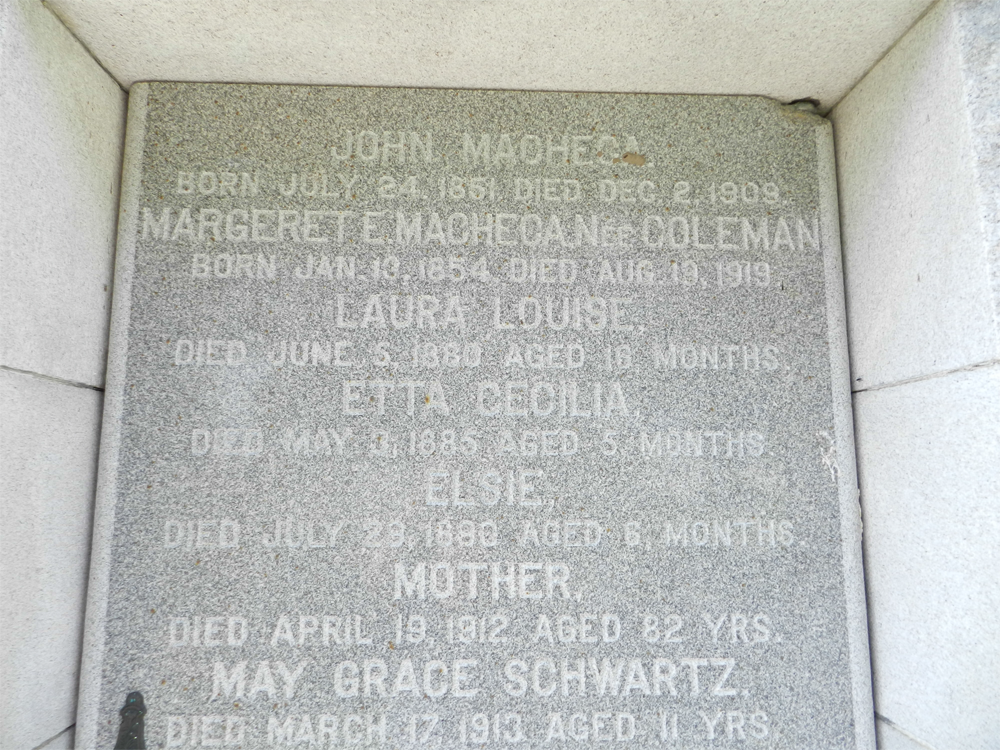
 |
If you should visit New Orleans and have a mind to visit those friends of ours you can contact me on my Facebook page, Crescent City Mafia, Murders and Mysteries and I’ll be happy to provide you with a map of marked locations. You can also check out Part 2 of my cemetery tour here.
- What’s This Silver Dollar Shit! That’s Sam Carollo! - June 26, 2023
- New Orleans Sets a Record - April 11, 2022
- Carlos Marcello Takes A Vacation: The Little Man’s Deportation to Guatemala Pt. 2 - June 11, 2021






